The vast majority of those serving prefer to belong to a Service, not an 'Element'
Aaron Hynes writes that there is no ‘navy’ to rename. Of course, and that's the point the Senate is seeking to correct because, unlike rarities like Aaron who have no problem belonging to a Canadian Forces 'element', the vast majority want to be identified with a traditional service, like the navy or air force. These traditional designations can easily be accommodated within the existing unified Canadian Armed Forces and its integrated functional command structure.
It is also very unfortunate that the writer completely misunderstands what would happen if these designations are officially brought back. Those wearing an air force uniform, but currently serving on a ship flying helicopters for example, would not find themselves out of place in the RCN. They would obviously belong to the RCAF within the unified Canadian Forces, even though they would be attached to a naval unit, in the same way that soldiers who belong to a particular regiment, find themselves serving under a different operational unit if posted to Afghanistan. What service identity you belong to, has nothing to do with what Command, what Task Force, what operational unit, you happen to be serving at the time. He either does not understand this, or he is deliberately spreading misinformation in the article he wrote and we attach below:
Recently, the Senate Standing Committee on National Security and Defence passed a motion calling on the government to change the name of the Maritime Command of the Canadian Forces (CF) to either "Canadian Navy" or "Royal Canadian Navy."
The intention behind this motion is laudable, and is doubtless appreciated by many former and current naval personnel who are passionate about the history and traditions of the service, including this writer.
However, the recommendation of the Senate committee is based on an incorrect supposition — namely, that the Canadian Forces Reorganization Act of 1968 changed the name of the Royal Canadian Navy to Maritime Command. What really happened in 1968 is that Canada ceased to have a navy per se. The name "Canadian navy" is still used colloquially by Canadians and as a brand by the Department of National Defence to refer to Canada’s warships and their crews. However, those ships and personnel belong to no single organizational entity within the Canadian Forces.
Maritime Command is not a navy by another name. It is an authority that exercises control over certain functions of the Forces. Maritime Command (MARCOM) does not control any ships or personnel engaged in military operations at sea. While deployed on operations, the CF’s ships and crews belong to Canada Command (CANCOM) when in Canadian waters or airspace, or Canadian Expeditionary Force Command when outside Canadian waters or airspace.
Even the admirals commanding the Atlantic and Pacific fleets do not belong to MARCOM. They actually belong to Joint Task Force (Atlantic) and Joint Task Force (Pacific), both of which fall under the authority of CANCOM.
Moreover, MARCOM commonly exercises authority over helicopters, fixed-wing aircraft, the installations at which these aircraft are based, and the personnel who operate and maintain them, all of whom wear the uniform of the air element of the Forces. MARCOM also has authority over many personnel who wear the uniforms of the air and land elements while serving as intelligence officers, cooks, logisticians, medics, etc. These personnel, who cling fervently to their own "air force" and "army" customs and traditions, would be very unhappy to suddenly find themselves in the Royal Canadian Navy.
The Canadian Forces simply does not have any organizational entity to which the name "Canadian Navy" or "Royal Canadian Navy" can be properly applied. Of course, the names army, navy and air force will always be used informally by those who proudly wear the land, sea and air uniforms of the Canadian Forces. That is how it should remain.
Aaron Hynes is a former naval officer who currently works as a policy adviser in the Senate.

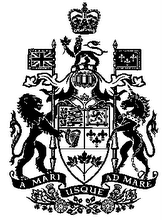


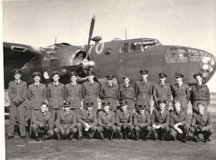

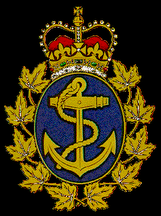




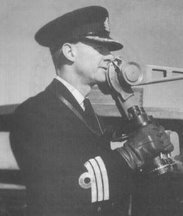
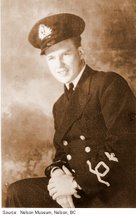


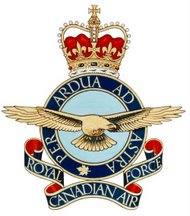
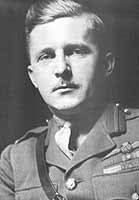
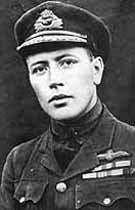
















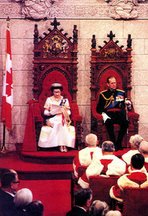
He supposedly cares passionately about the history and traditions of the service (note that he uses 'service' and not 'element'), admits that there are air force and army types who care passionately about their customs and traditions, then pisses all over everything by stating that the terms navy, army and air force should be used informally and things should stay as they are. That's all we need is a guy like him as a policy advisor.
ReplyDeleteI have always despised the term 'element'. On its own it is simply ridiculous but then it forms the root for even more assinine terms such as 'distinctive environmental uniform.' Stoves have elements; countries have armed services.
Lol!
ReplyDeleteMy point is that simply changing the name of Maritime Command (which is neither a service nor an element, but a command) would not make it a service. It doesn't make sense to call a command a navy, especially when most of our ships and sailors do not even belong to it. MARCOM is not a navy, just like CEFCOM is not a navy and CANCOM is not a navy. Our sailors and ships sometimes belong to one of these commands, and sometimes belong to another. To restore the navy as a service, you would have to place all of our ships and sailors permanently under a single command. If that's what you want to do, then just say so - It makes more sense than calling MARCOM a navy. And if you are more concerned with mere names than with whether a distinct naval service actually exists, then why bother? - The name "Canadian Navy" is already commonly used to describe Canada's ships and sailors.
ReplyDeleteThe point is we want Royal Canadian Navy to be commonly used to describe Canada's ships and sailors, not Canadian Navy. That's why we bother.
ReplyDeleteI understand and agree. My point is that you can't achieve your stated goal by renaming MARCOM, because our ships and sailors do not belong to MARCOM. It doesn't make sense to call something the Royal Canadian Navy if our ships and men don't belong to it. It seems to me that you really want to rename is the "sea element" of the CF.
ReplyDeleteYes, I despise the term element. If you wear the naval uniform, you belong to the Royal Canadian Navy, regardless of where you are employed within the unified CF. That is your service identity. Everyone who wears the uniform obviously identifies themselves as being naval anyways, so this would just formalize what is unofficially the practice already.
ReplyDeleteNow we're on the same page. Where the Senate committee's motion went wrong was in targeting MARCOM instead of the 'sea element.'
ReplyDeleteWell, we understand each other at least. But we are only on the same page if you support RCN and RCAF, and it sounds like - please correct me if I am wrong - you do not.
ReplyDeleteI have no objection to using the word "Royal". I appreciate that it was under the name "Royal Canadian Navy" that our naval service realized its greatest achievements and sacrifices. However, I'm happy to defer to currently serving members when it comes to the precise name that is used. My main concern is that whatever name is used, it is applied properly - ie. to a body that includes all our ships and sailors.
ReplyDeleteUnlike you, I am not happy to defer to currently serving members. The history and heritage of this country belong to all citizens, not just a select few. My taxes go to pay for salaries, uniforms, ships, aircraft AND titles and I want Royal Canadian Navy and Royal Canadian Air Force. If all it takes is distinct bodies to hang the titles on, so be it.
ReplyDeleteFine with me - I have no dog in that fight. The point of my article was simply to ensure that the name "Royal Canadian Navy" is not given to some entity to which our ships and sailors do not belong.
ReplyDeleteAaron Hynes needs to look up the definition of navy (e.g. the whole body of warships and auxiliaries belonging to a country) and stop confusing force employment and force generation activities. Sea-going Canadian sailors and ships belong to MARCOM, are employed at sea by MARCOM for force generation activities, and then are detached individually to CanadaCOM or CEFCOM to employ operationally. Once the mission is complete they return to MARCOM. Sounds like a navy to me.
ReplyDeleteInterestingly, the largest navy in the world (USN) also has force employment of its assets exercised by an independent "combatant commander" yet I doubt Aaron Hynes would accuse the USN of not being a navy.
Aaron Hynes is flat out wrong about Regional Joint Task Forces and chains of command. The two coastal commanders have two roles: With one hat they are Commander Maritime Forces Pacific/Atlantic and with the other hat they are Commander Regional Joint Task Force Pacific/Atlantic.
In an ironic twist, Aaron Hynes' bio notes that he served in the "Canadian Navy". http://www.ctv.ca/mini/election2006/candidates/10002_CON.html